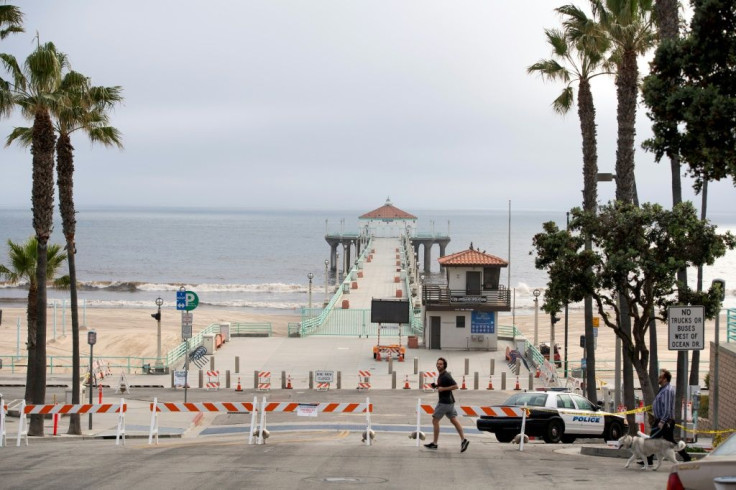US Decade Of Growth Ends As Virus Contracts GDP By 4.8%
The US economy's decade of expansion ended dramatically in the first quarter as the coronavirus pandemic caused GDP to shrink by 4.8 percent, and second quarter growth is set to plummet even further.
The decline -- the biggest fall in GDP in 12 years and slightly worse than analysts had expected -- came after the pandemic forced businesses to close and halted purchases and investments, the Commerce Department said Wednesday.
Yet the report noted it could not quantify the full economic effects of the virus, and the figures are expected to sink well into the double digits in the second quarter, when the impacts from the shutdowns are fully felt.
"Thus ended the expansion which began in the third quarter of 2009; killed by COVID-19," Ian Shepherdson of Pantheon Macroeconomics said.
"But these data capture only the squall before the second quarter hurricane, so it's not going to change anyone's mind on the future trajectory of the economy."
The grim numbers underscore the damage done to the world's largest economy by the pandemic, which has already caused an estimated 26 million job losses and sent Congress and President Donald Trump scrambling to cut the losses.
The coronavirus outbreak in United States has grown into the world's largest and deadliest, with the country's caseload rising to 1,011,877 on Tuesday and deaths hitting 58,351.
Commerce Secretary Wilbur Ross acknowledged the numbers were "weak" but in line with expectations.
"We continue to have the most resilient economy in the world, driven by innovative and hardworking Americans who have shown that they are willing to make the needed sacrifices to defeat this invisible enemy," Ross said in a statement, predicting the country would come back "stronger and healthier than ever."

In Washington, Democratic and Republican lawmakers are negotiating over aid to state and local governments after last month passing a massive $2.2 trillion stimulus measure that included direct payments to Americans and loans and grants for struggling small businesses.
Meanwhile, states across the country are eyeing lifting lockdown measures, with Georgia recently allowing beaches and restaurants to reopen, though many other areas have committed to keeping the confinements in place for now.
The new GDP data is a sharp reversal from the last quarter of 2019, when the economy grew by 2.1 percent and analysts were more concerned with whether Trump's trade policies would continue to weigh down growth in 2020.
Personal consumption fell by 7.6 percent in the first quarter, the data said, due to decreases in spending in a wide variety of sectors, including healthcare, motor vehicles and parts.
Worrying as the report is, the lockdowns, travel curtailments and quarantine restrictions necessitated by the virus only came in the last few weeks in March, which were the tail end of the quarter.
That means next quarter's numbers will be even worse, analysts say, with Oxford Economics projecting growth plunging by 40 percent.
Overall, the economy is set to see its worst contraction since World War II, and even with the congressional stimulus and trillions of dollars in new liquidity from the Federal Reserve, "the employment losses will be traumatic, and the rebound post-virus will be very gradual and fraught with pitfalls," Oxford said.
The Fed is on Wednesday wrapping up its first scheduled meeting since it lowered the benchmark lending rate to zero in March as the virus's potential for economic devastation became clear.
But having already greatly expanded its liquidity measures and its lending to banks, corporations, small businesses and state and local governments, Fed Chair Jerome Powell is expected to mainly underscore the central bank's committment to aiding the economy when he speaks after the meeting.
© Copyright AFP 2024. All rights reserved.





















